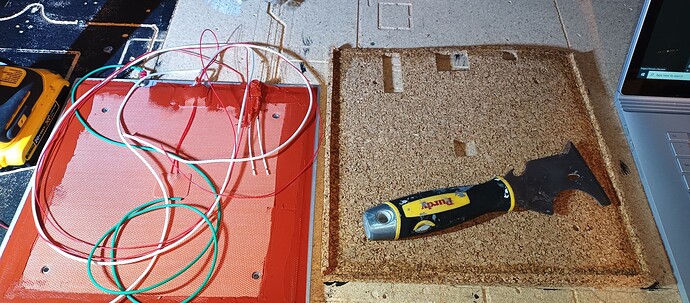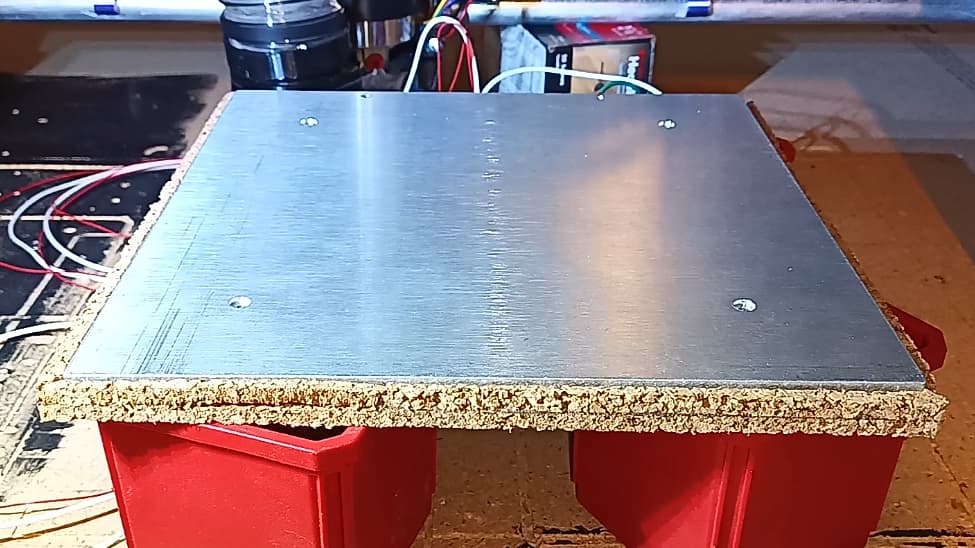Tried, but failed to mill acceptable cork “Bed Snugger” ™. Fits like a decrepit worn out glove, fixable with silicone, but is too crumbly for me. So, have ordered some popular foam insulation that @Jonathjon, @niget2002 are using.
Left dxf and gcode files on my repo incase someone wants to have a go.
Single flute downcut carbide to help pin down the cork, 15mm/s, lowest makita speed, screwed stock down with just 4 screw near the corners, but clear of where mill end was expected to pass (~20mm in from each corner).

